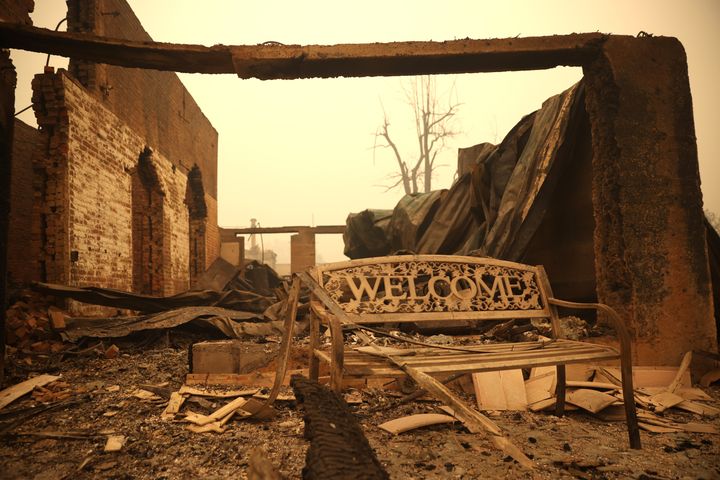LAME DEER, Mont. (AP) — Wildfires in Montana threatened rural towns and ranchland, and victims of a California blaze returned to their incinerated town even as the region faced another round of dangerous weather.
Firefighters and residents scrambled to save hundreds of homes as flames continued to advance on the Northern Cheyenne Indian Reservation in southeastern Montana.
Since Sunday, the fire has carved its way through some 260 square miles (673 square kilometers) and prompted evacuation orders for thousands of people.
As the fire raged across rugged hills and narrow ravines, tribal member Darlene Small helped her grandson move about 100 head of cattle to a new pasture, only to relocate them twice more as the flames from the Richard Spring fire bore down, she said Thursday. An extreme drought that’s blanketing the West has made matters worse by stunting vegetation untouched by fire.
“They’ve got to have pasture where there’s water. If there’s no water, there’s no good pasture,” Small said. Particularly hard hit were some ranchers already depending on surplus grass after a fire burned them off their normal pasture last year, she said.
Gusts and low humidity were creating extreme fire behavior as flames devoured brush, short grass and timber, fire officials said.

The same conditions turned California’s Dixie Fire into a furious blaze that last week burned down much of the small town of Greenville in the northern Sierra Nevada. The fire that began a month ago has destroyed some 550 homes.
On Thursday, residents were trying to cope with the magnitude of the losses.
“Everything that I own is now ashes or twisted metal. That’s just all it is,” said Greenville resident Ken Donnell, who escaped with just the clothes on his back.
Donnell said he was heart-broken but “by God, I’m gonna smile. Because you know, it just makes things a little bit better and a little bit better right now is a lot.”
Sam Prentice, a firefighter for the USDA Forest Service battled the flames in Greenville on Aug. 5, when the town was leveled. He was not optimistic on Greenville’s ability to rebuild.
“Essentially it starts to become an archeology site — kind of a testament to the fire era that we’re in right now,” said Prentice. “It’s daunting.”
The fire had ravaged more than 800 square miles (well over 2,000 square kilometers) and continued to threaten more than a dozen rural and forest communities.
Despite firefighting progress, it was 31% contained and fire officials warned that hot weather would continue and Northern California would see a red flag warning of critical fire weather beginning Friday afternoon. The weather would bring a chance of dry lightning that could spark new blazes even as crews continue trying to surround a number of other forest fires that were ignited by lightning last month.

Hot, dry and weather with strong afternoon winds also propelled several fires in Washington state and similar weather was expected into the weekend, fire officials said.
Unstable weather was forecast throughout the drought-stricken West, where more than 100 large fires were burning in more than a dozen states.
In Montana, days of swirling winds spread flames in all directions, torching trees and blowing embers that flew across a dry landscape.
The fire had crept within about a mile (3.2 kilometers) of the eastern edge of the evacuated town of Lame Deer, home to about 2,000 people, the tribal headquarters and several subdivisions.
With 40-foot (12-meter) flames visible from parts of Lame Deer, firefighters worked into early Thursday morning to keep the blaze from destroying houses. None were reported lost, but officials continued assessing the damage.
Climate change has made the Western United States warmer and drier in the past 30 years and will continue to make the weather more extreme and wildfires more destructive, according to scientists.
___
Eugene Garcia in Greenville, California, contributed to this report.
